Introduction
A curious shrub with twisted stems and branches, walking stick slowly develops into a nice, rounded form. Branches grow upright when the plant is young, but eventually droop toward the ground. Flowers emerge and hang from bare stems before the foliage appears in the spring. Fruit is persistent and enjoyed by birds, rodents, and humans.
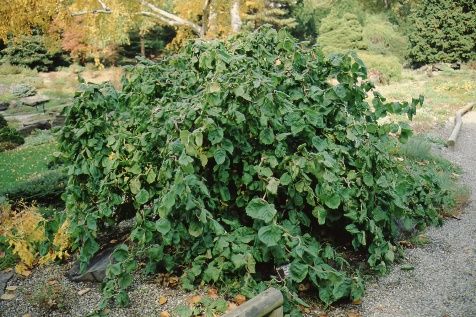
Credit: Edward F. Gilman, UF/IFAS
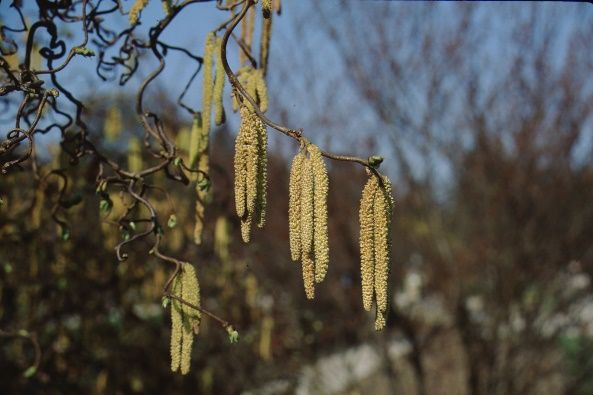
Credit: Edward F. Gilman, UF/IFAS
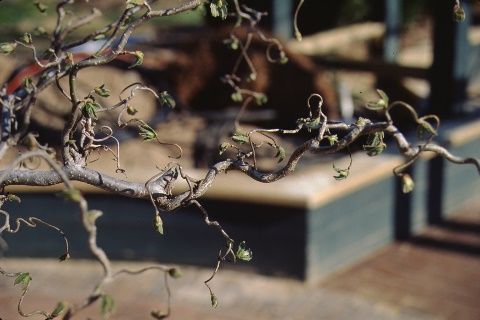
Credit: Edward F. Gilman, UF/IFAS
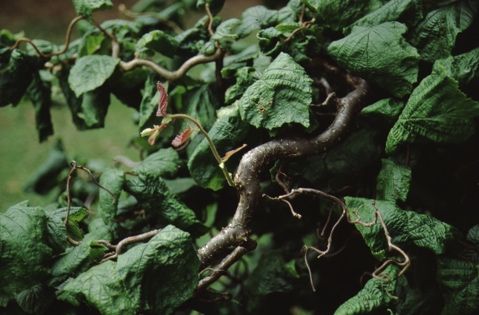
Credit: Edward F. Gilman, UF/IFAS
General Information
Scientific name: Corylus avellana 'Contorta'
Pronunciation: KOR-rill-us av-vell-LAY-nuh
Common name(s): Contorted European filbert, Henry Lauder's walking stick
Family: Betulaceae
Plant type: shrub
USDA hardiness zones: 4B through 8 (Figure 5)
Planting month for zone 7: year round
Planting month for zone 8: year round
Origin: not native to North America
Invasive potential: not known to be invasive
Uses: border; container or above-ground planter; accent; cut foliage/twigs
Availability: somewhat available, may have to go out of the region to find the plant
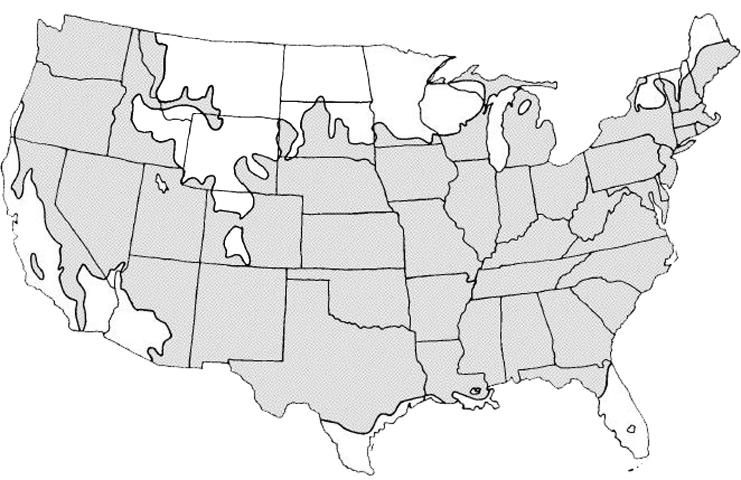
Description
Height: 5 to 10 feet
Spread: 8 to 12 feet
Plant habit: round
Plant density: moderate
Growth rate: slow
Texture: medium
Foliage
Leaf arrangement: alternate
Leaf type: simple
Leaf margin: serrate
Leaf shape: orbiculate
Leaf venation: pinnate
Leaf type and persistence: deciduous
Leaf blade length: 2 to 4 inches
Leaf color: green
Fall color: yellow
Fall characteristic: showy
Flower
Flower color: brown
Flower characteristic: spring flowering
Fruit
Fruit shape: elongated
Fruit length: 1/2 to 1 inch
Fruit cover: dry or hard
Fruit color: brown
Fruit characteristic: suited for human consumption
Trunk and Branches
Trunk/bark/branches: showy; typically multi-trunked or clumping stems
Current year stem/twig color: brown
Current year stem/twig thickness: medium
Culture
Light requirement: plant grows in part shade/part sun
Soil tolerances: acidic; slightly alkaline; sand; loam; clay
Drought tolerance: high
Soil salt tolerances: poor
Plant spacing: 36 to 60 inches
Other
Roots: sprouts from roots or lower trunk
Winter interest: plant has winter interest due to unusual form, nice persistent fruits, showy winter trunk, or winter flowers
Outstanding plant: plant has outstanding ornamental features and could be planted more
Pest resistance: long-term health usually not affected by pests
Use and Management
Most people plant walking stick in a prominent location in the landscape so its unusual habit can be displayed. Place it in a mulched bed or in a mass of low ground cover so adjacent plants will not interfere with it. It can be used as the accent in any garden and is often placed near water, near a deck or patio so passers-by can enjoy it up close.
Pests and Diseases
A foliage and twig blight has been reported.